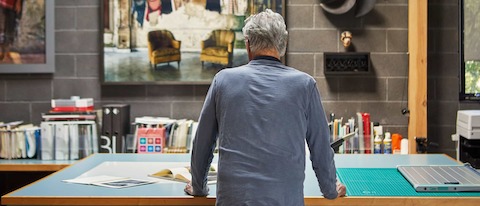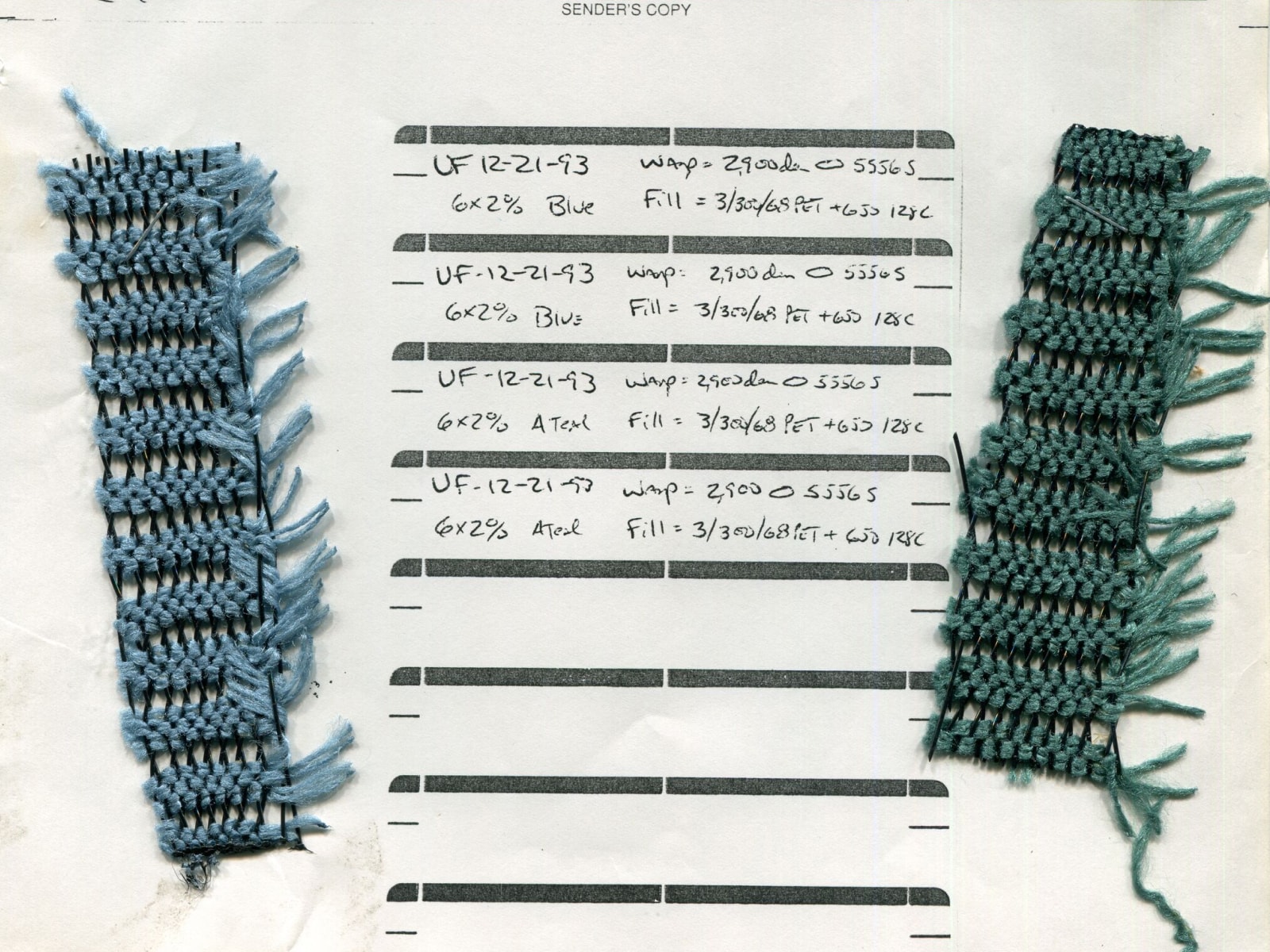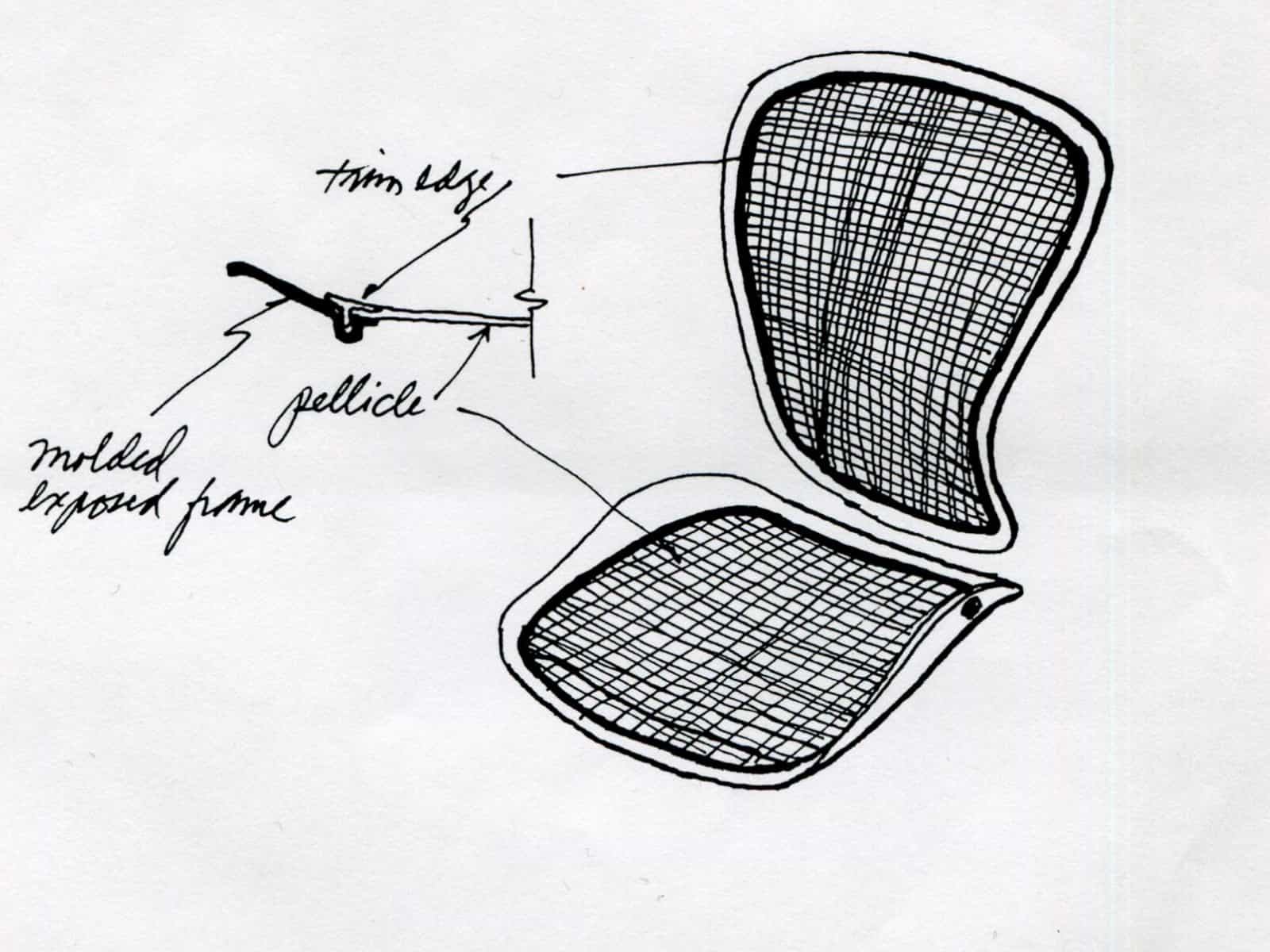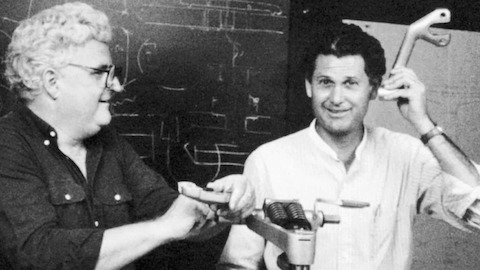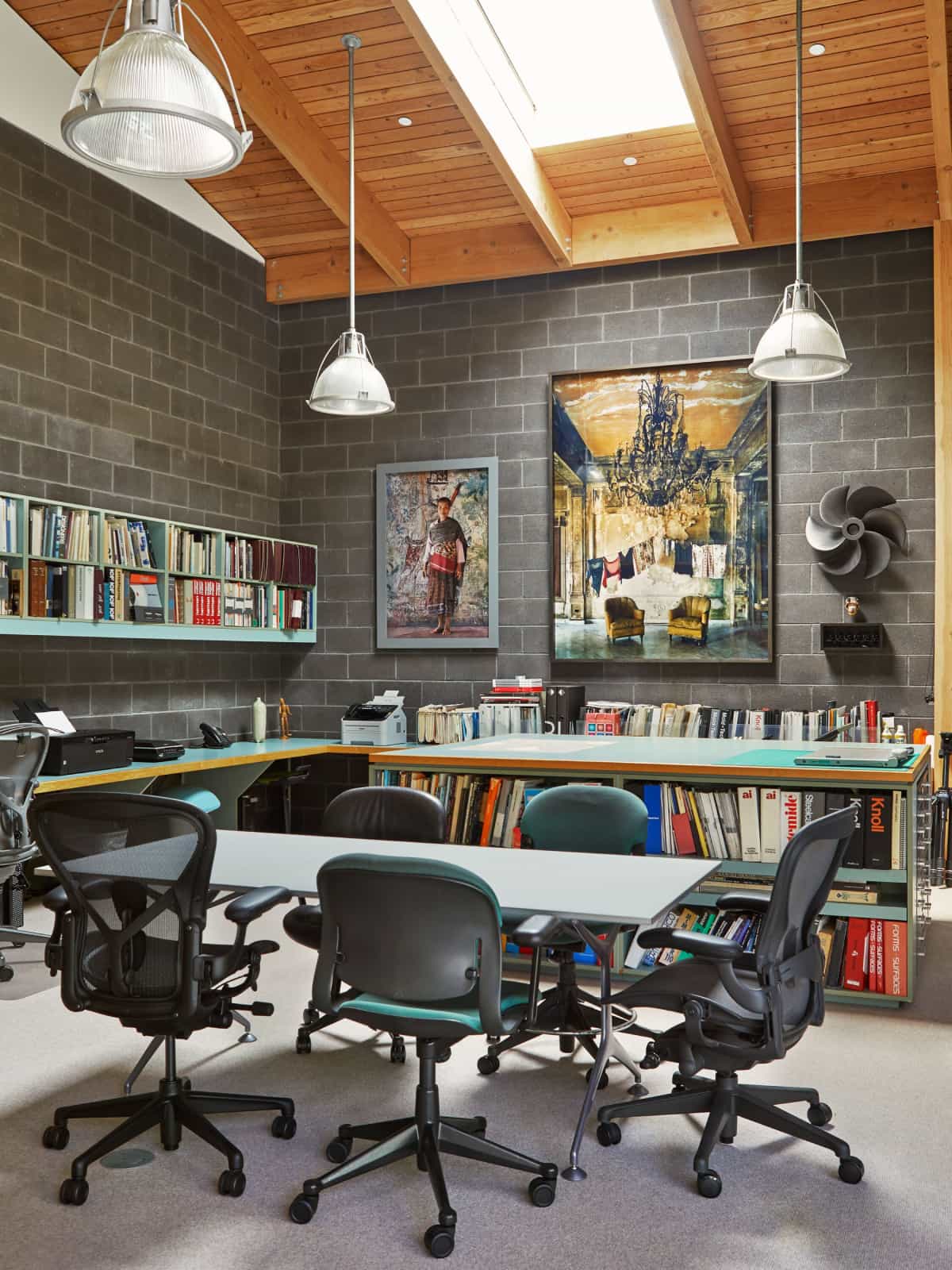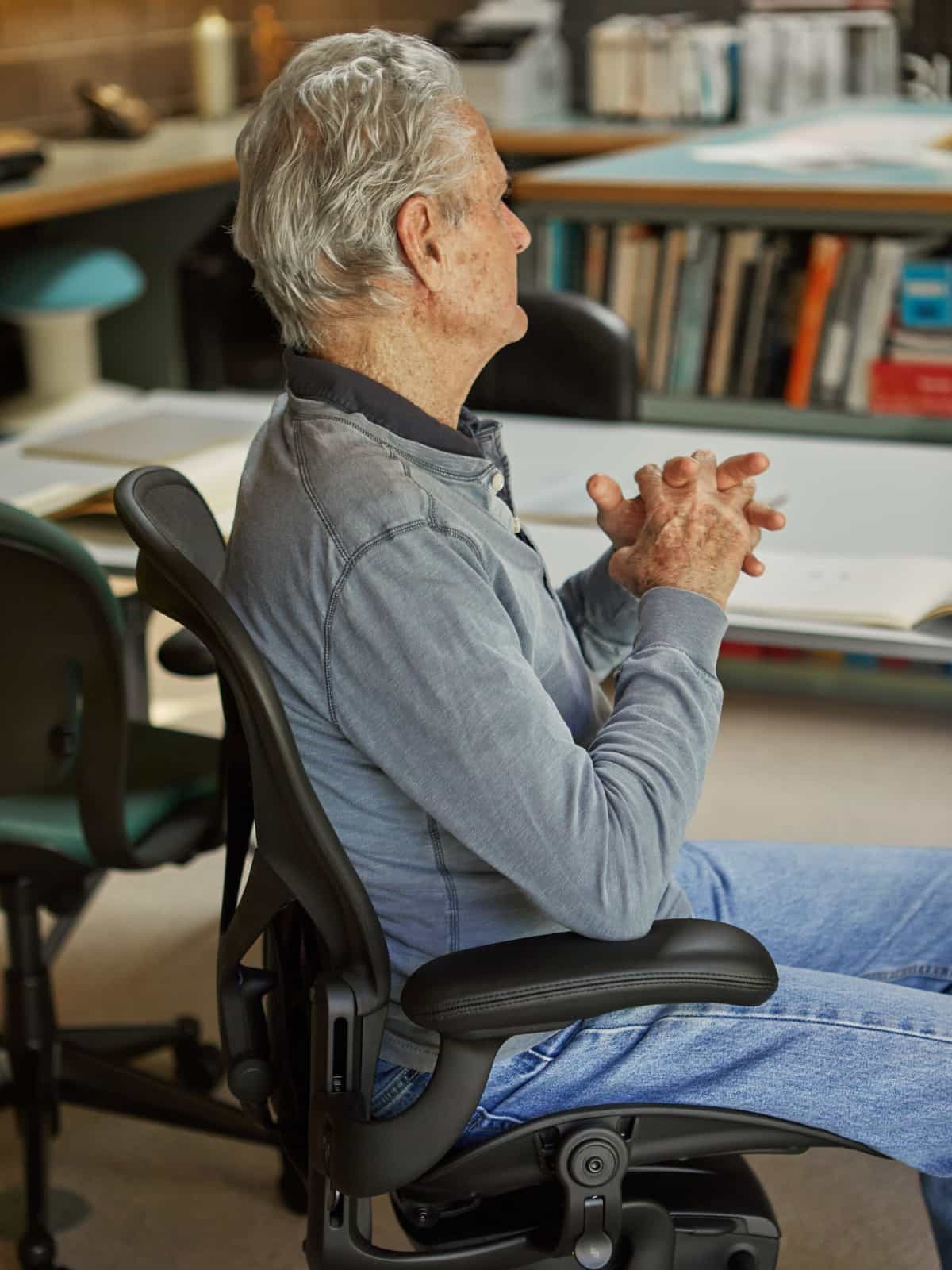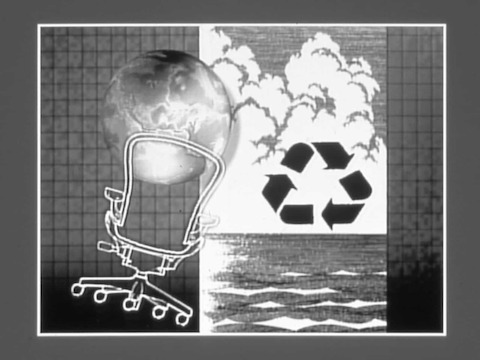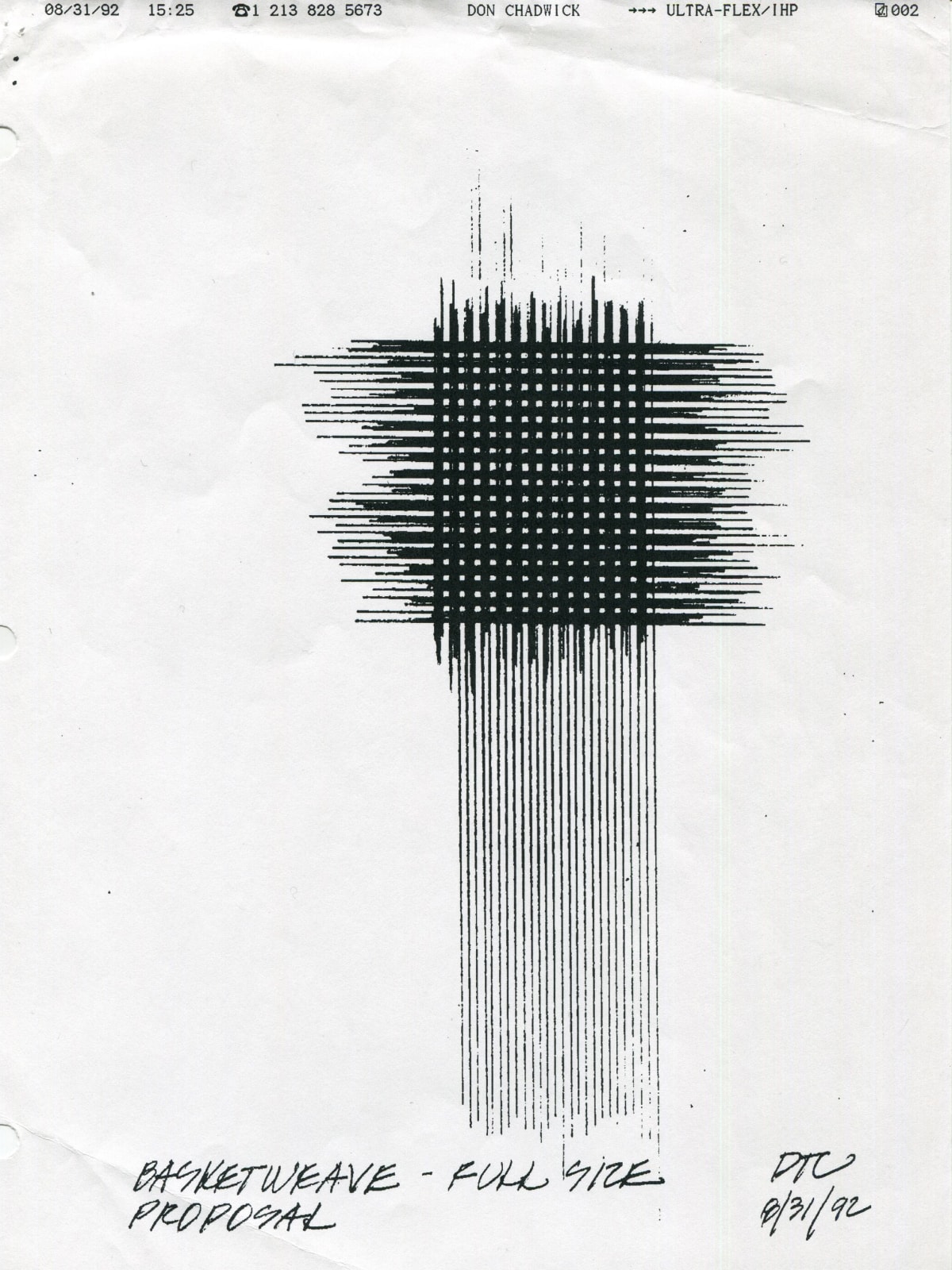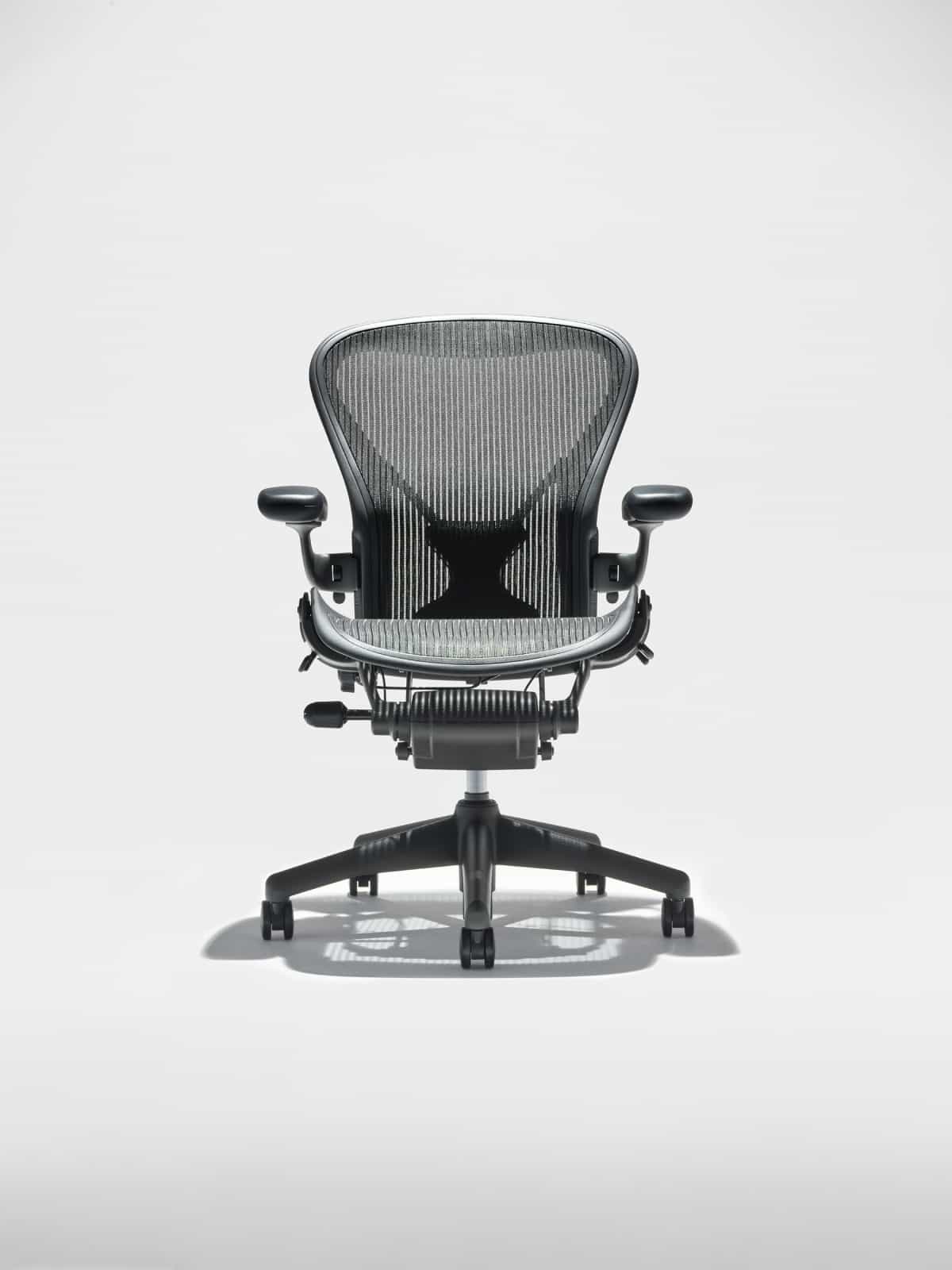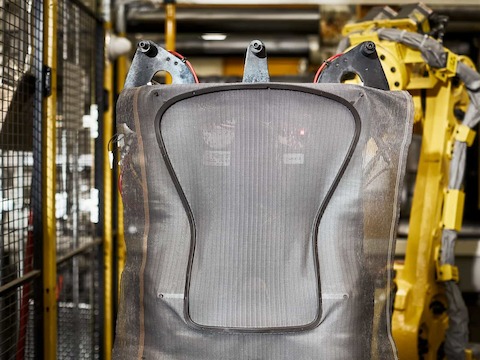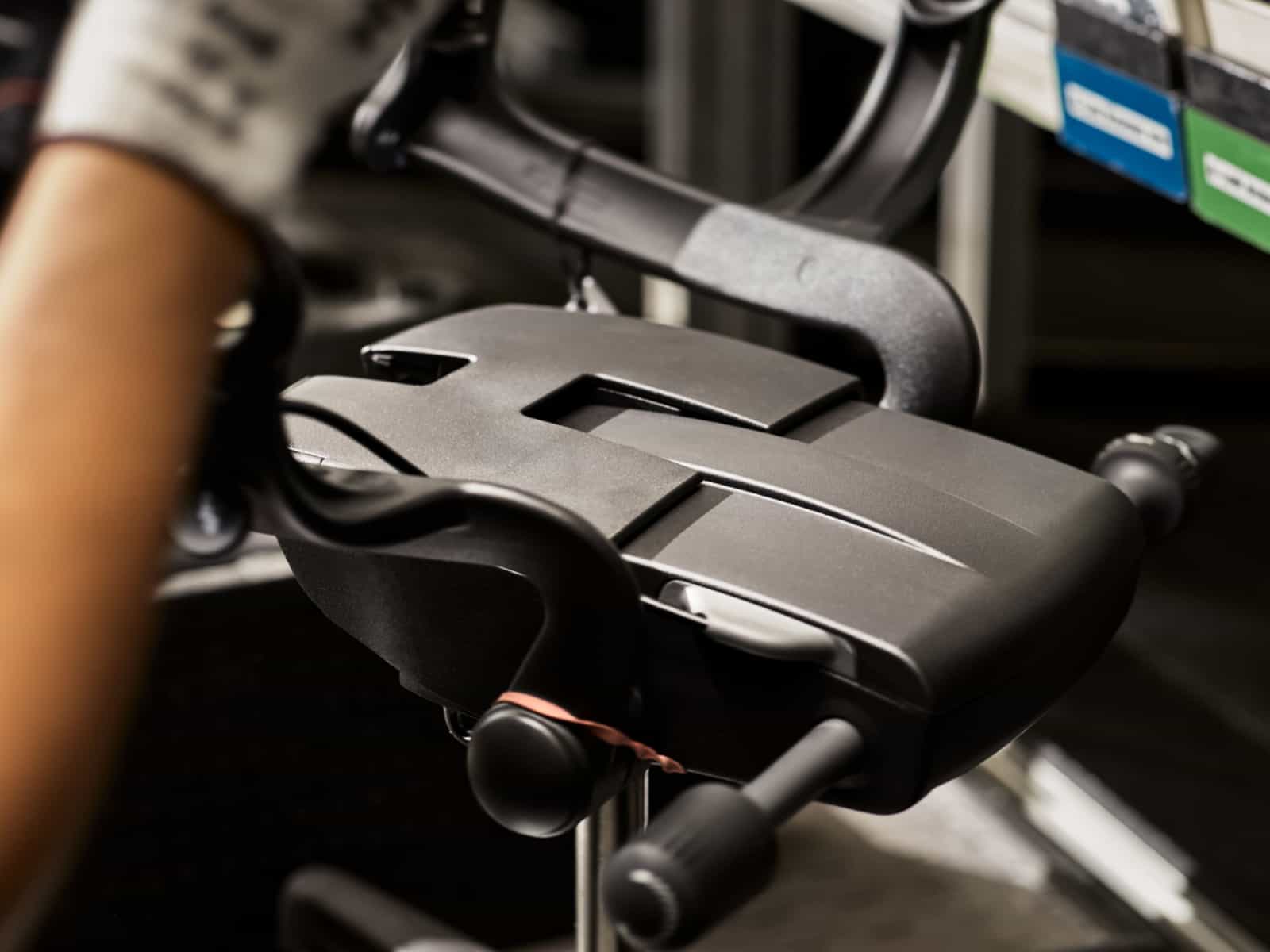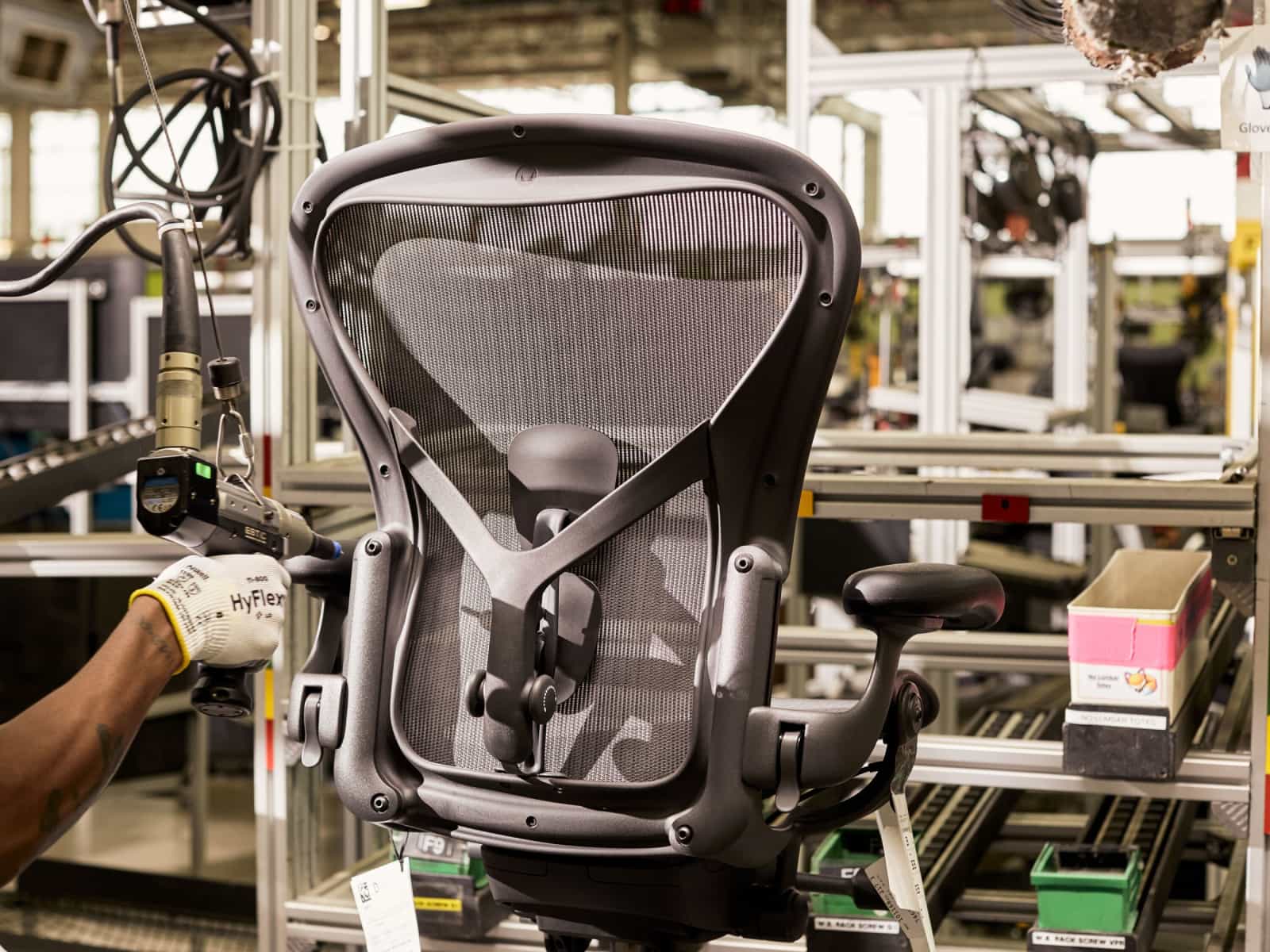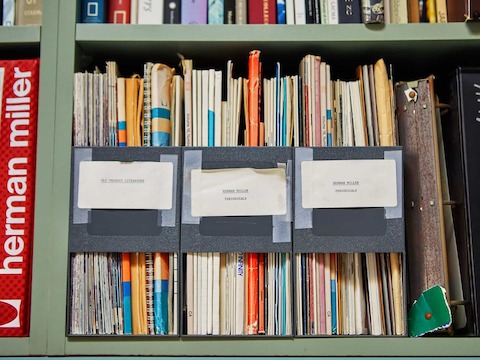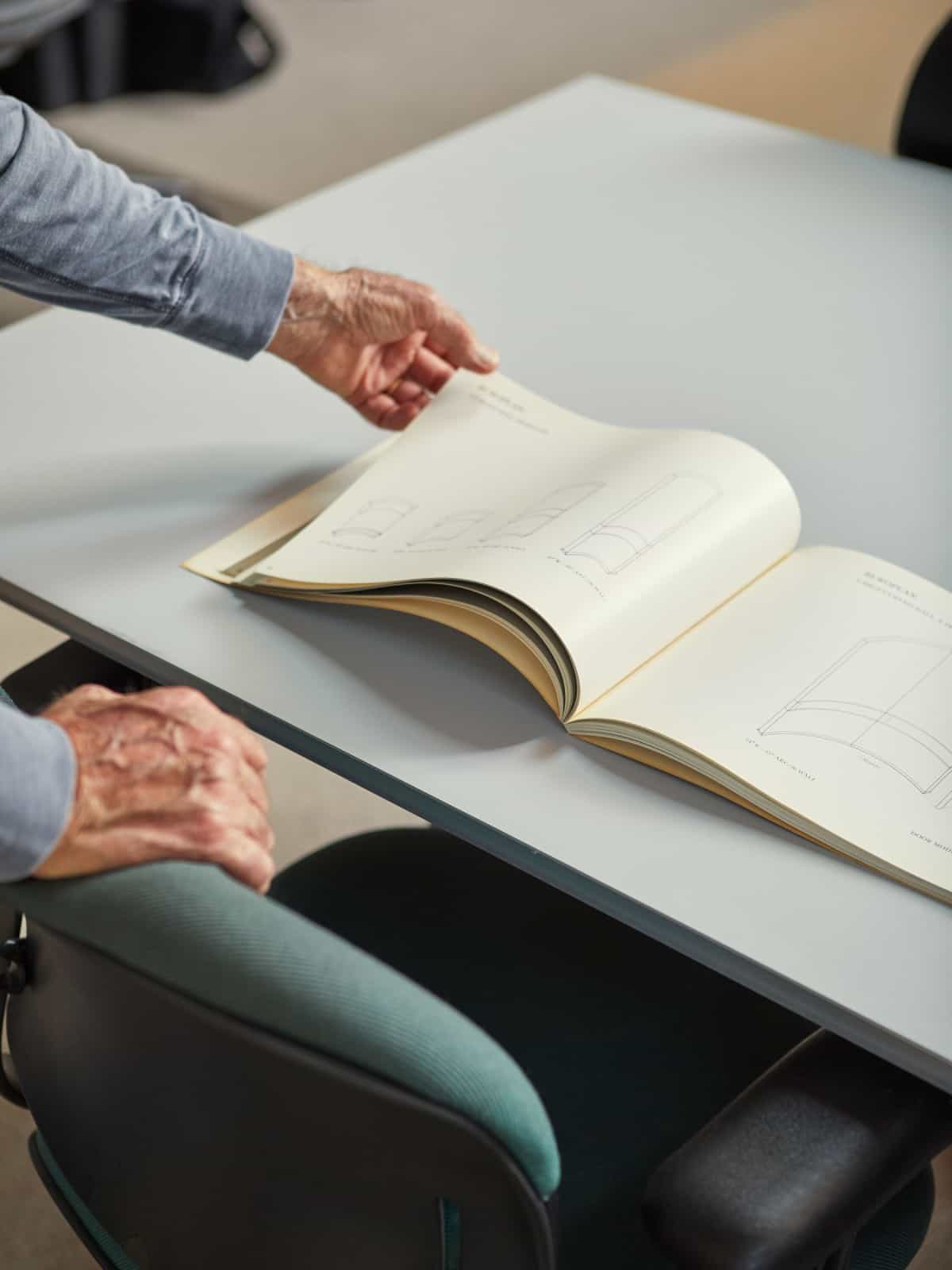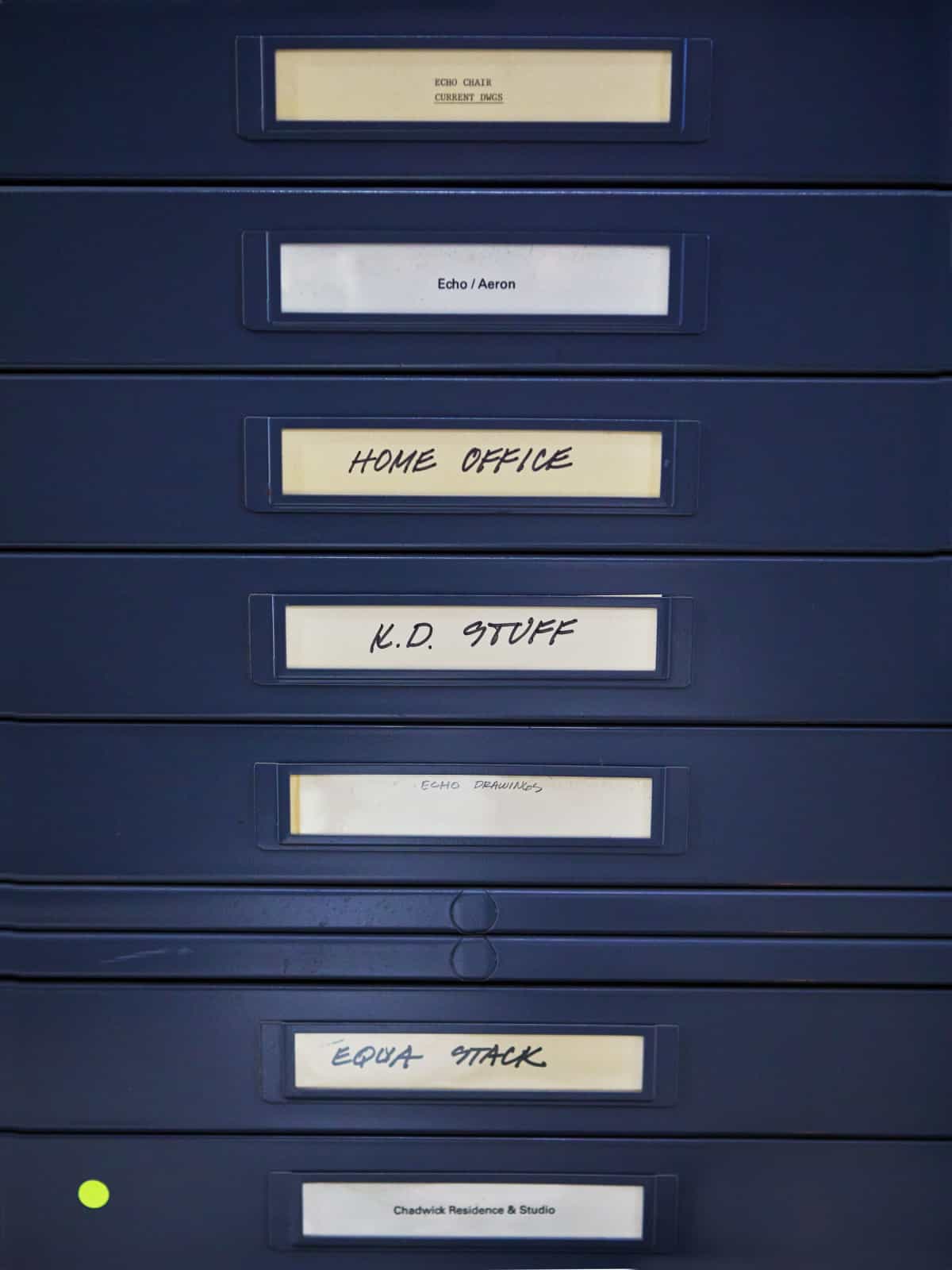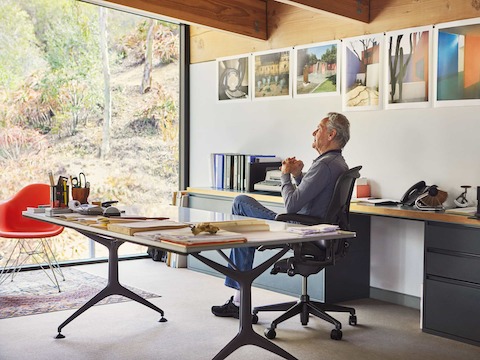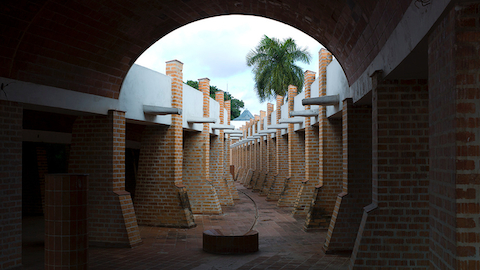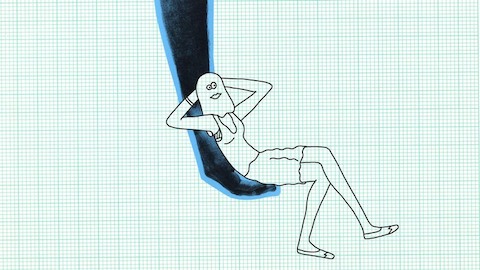To understand designer Don Chadwick’s point of view, consider the landscape. Specifically, the chaparral canyon where he’s made his home since 1965, and more broadly, post-war Los Angeles.
Chadwick, born in 1936, is a native Angeleno who moved to a canyon north of Brentwood over 50 years ago. In the early 2000s, following the runaway success of his most well-known design, the Aeron Chair, Chadwick enlisted architect Frederick Fisher to build a new studio on the property, where he still maintains a daily practice.
Chadwick’s body of work—largely concerned with seating—is substantial, wide-ranging, and mostly self-generated: He’s experimented with rotationally molded plastic, with rigid urethane, with self-skinning foam, and with sling suspension.
Chadwick credits his early curiosity with materials to a childhood interest in mechanics, which dovetailed with a UCLA industrial design education informed by professors plucked from the local aeronautics industry. The innovations derived from wartime technology factor into Chadwick’s thinking, as well as Herman Miller’s mid-century catalog: ergonomics (a study first applied to military pilots), fiberglass (derived from the aerospace industry), and molded plywood (famously explored by Charles and Ray Eames in their wood veneer leg splints).
Bob Blaich, former vice president of design at Herman Miller, brought Chadwick onto the Herman Miller roster in the early 1970s precisely for his “deep interest in new materials and processes.” The designer’s experiments with injection-molded foam yielded one of that decade’s most distinctive sofas—a curvy, modular lounge system—and Blaich then paired Chadwick with another design talent, Bill Stumpf, on a brief to rethink the office cubicle. While the resulting system, Buroplan, never came to light, Chadwick and Stumpf’s budding partnership relied on the former’s focus on materials and fabrication, and the latter’s obsession with human ergonomics.
Twenty years later, of course, the duo would introduce their Aeron Chair, a seating archetype that would break all the rules for what an office chair could look like, and how your body could feel at the end of the day. And while materials (a brand-new suspension textile called Pellicle) and ergonomics (designed to fit bodies from the first to 99th percentile) were paramount from Aeron’s inception, so was the idea of longevity. The result is a chair that’s highly engineered, suitable to nearly every body, and designed to last. Chadwick is his own best advertisement: He rotates between several editions of Aeron, including his original design produced in 1994.
And the designer’s interest in materials—how to push them into new forms or apply them for different environments—is just as palpable today. As we’ve re-engineered Aeron with components made from ocean-bound plastic, we thought it would be a good time to talk with Chadwick about his current outlook on sustainability, and how Aeron became the most rule-breaking chair in the game.
When you and Bill Stumpf were starting to work on Aeron, what were the principles that you were driving toward in terms of materials? Obviously, 30 years ago, people weren’t talking about sustainability in the way they are now.
No; but we were cognizant of the fact that traditional office chairs were composed for the most part of foam and fabric. And even with the Equa Chair that we worked on before the Aeron Chair, we tried to reduce the amount of material. We came up with this flexible shell that you can sit on directly, or you could put very thin pads on it. We tried to minimize the material of the chair itself.
How did Aeron come about?
It was quite a challenge when we were given the assignment, because we had to outdo everything that Herman Miller had ever done—at least, in the eyes and minds of Bill and myself. We had done a lot of earlier work on ergonomics, kinematics—if you study some projects that never got into production, they had certain ideas, relevant ideas, that we could take from and put into this Aeron Chair.
What was so vanguard about the chair?
The major departure from 99 percent of office chairs, if not more, was in developing from scratch a suspension material that conformed to the body’s movement. That would have a certain amount of resiliency and elasticity and allowed different sizes of people to sit on the chair and still be comfortable. On top of that, we figured it’s better to have a chair come in sizes. That way, we can cover the greatest percentile of potential users. Those were all new ideas at the time.
The most obvious difference between the Aeron and any other chair at the time was the Pellicle.
What were all the steps leading up to the use of Pellicle, which was something that simply did not exist before?
We had experimented with one-way stretch material that DuPont made that was designed to be stretched across the frame. It had an elastic feel to it, and then foam would go on top of that. We experimented with that in a chair we worked on for the elderly [the Sarah Chair]. We ran it one way across and then front and back, giving it a two-way suspension. And in researching, I got the name of a company that made elastic belting.
How were the two revolutionary elements—Pellicle and encapsulation—developed?
The head engineer at the time was Jeff Bruner. I connected with Jeff, and he showed me what they were experimenting with: a very crude version of what the Pellicle is today. Looking at that [material] I made a scale model—which the Henry Ford Museum has now—of the Aeron Chair. Then Jeff developed the Pellicle. He knew the right weave, which is called a lino weave, and how to develop the filling yarns. We went through multiple iterations before we had something that both physically and functionally worked.
There was another company in Grand Rapids called Cascade Engineering, which is basically an injection molding firm. They had come up with a process where they could mold fabric to plastic, called capsulation. So, their ability to encapsulate a fabric into a piece of plastic hit on the idea of what we now call the carrier. The suspension is stretched in a mold, and then they inject the mold with plastic around it, so it’s locked into the plastic. That was a whole new technology.
What was Bill Stumpf like as a designer, and how did that fit in with your approach?
Bill was more focused on the ergonomic side. I was more on the aesthetic and material side and construction side. And we managed to merge those differences and similarities.
At the moment your design for Aeron was completed, what were you all thinking?
We were confident enough to get the product accepted and into production. But we had no idea of the breadth of acceptance the chair would achieve in a short amount of time. That was beyond everyone’s expectations.
But when we took on the project, we were of the mind that we were going to break all the rules. We were the risk-takers, Bill and I. We were willing to push the boundaries beyond what Herman Miller had done, and what a lot of other people had done.
When did you realize it was such a success?
Well, when we were doing early focus group testing of the Aeron Chair, there were mixed reactions. People were surprised. In looking at the chair, there was a certain amount of skepticism, though once they sat on the chair, it changed their perception.
So Herman Miller knew they had to really tell a compelling story about the chair. The initial large Aeron order went to a company called Silicon Graphics. They developed one of the early computers that would handle 3D modeling and animation. So originally we were focusing on high-tech companies: “Here’s a high-tech chair; we’re going to put it in high-tech companies.” Then it migrated to the music industry, the film industry, and it got exposed through television, film, whatever. Eventually we found out that companies—banking companies, finance—were specifying the chair. Aeron just kind of found its way into industries that were historically very traditional, wood desk companies.
How does that feel, knowing that so many people have interacted with this design in a positive way?
I’ve seen Aeron Chairs in a lot of places I hadn’t expected to see them. I’ve signed a few chairs. That’s always fun.
How can Aeron become even more sustainable over time?
I know Herman Miller would like to use ocean-bound plastic on more parts of the chair. The back [and tilt mechanism parts] are a good place to start, because the structural requirements on the back are not the same as it is on the seat. There are more load-bearing issues on the seat than on the back.
Fortunately, the rest of the chair is made of cast aluminum, which is practically 100% recyclable today.
The extended life cycle is a big part of the Aeron Chair too. Isn’t that the point of making things well?
A lot of people would say, how can you spend $1,000 on a desk chair? But if you amortize that over the life of the chair, 20 years—I mean, I have one that’s from 1995.
It’s a question of longevity. It won’t become obsolete even if one part stops working.
The way the chair goes together, you could fix it. You don’t have to throw it in the trash; you can replace the parts. That’s always been the philosophy: It's sustainable not only in the material, but the way the product goes together, the way it’s assembled.
Sustainability—did we think about it much? We did, with the expectation that had to do with longevity.
Going back to your own interest in material innovation. Wasn’t Los Angeles a hotbed of post-war technology and fabrication?
Yeah. All you have to do is look at Herman Miller products that were the fruits, if you will, of the post-war technological boom. The Eames fiberglass shell was a result of an encounter that the Eameses had with two young engineers in Gardena who had a plastics company; they were making fiberglass reinforced parts for the aerospace industry.
These are all local companies. The bubble lamps that George Nelson designed were based on a warship technology called moth-balling. They would bring them into port and spray a material over the sensitive parts to protect the ships from salt and corrosion. That material is what Nelson based his bubble lamps on. Another example of the technology being translated into viable product.
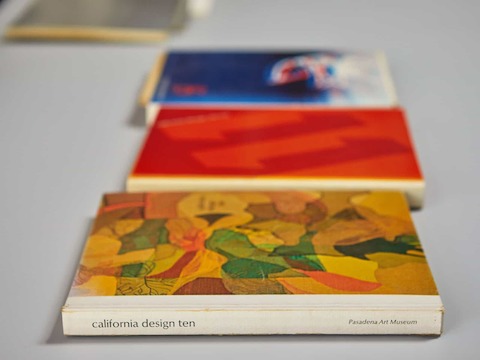
California Design was a regular periodical produced by the curators at the Pasadena Art Museum during the 1960s and ‘70s that surveyed the latest in industrial design, furniture, and craft from around the region. Chadwick’s early work—from a rotationally molded plastic chair prototype for Knoll to other experiments in seating—proliferates.
When you were in school studying industrial design, was this all part of the conversation?
Yes, and of course, having curiosity doesn’t hurt either. You’ve got to go out and seek out these technologies to fully understand them. But you learned a lot at school. There's no question that [instructors teaching] aerospace technology had a profound effect on design, particularly in Southern California.
What did your post-graduate work entail?
When I got out of school in 1959, I was fortunate to go work in an architectural office of Victor Gruen. I was in the graphics department. Gruen’s office was doing a lot of shopping center work and city planning, and so they were producing a lot of signage and brochures. So, I was working on signage, paste-up, all that business—all pre-computer.
After we both left Victor Gruen, Frank [Gehry] found a space in Brentwood on San Vicente. At the time it was all storefronts, and he got a large studio-warehouse space that belonged to an artist. He rented out some of the smaller rooms and I rented one of them. There was another designer in there who also worked at Gruen—Gere Kavanaugh.
How did you get connected to Herman Miller?
I had a small office above a hardware store here in Brentwood on Barrington. That space was once occupied by [architect] Ray Kappe. I had all kinds of access for materials for model-making. Anyhow, I was in that space when Bob Blaich came to visit me along with somebody from the Eames Office. The two of them came, and we talked, and I showed them things I had been working on that had won some industrial design awards.
How did you and Bill Stumpf first start working together? How did your respective strengths reinforce what you were able to do in partnership?
The modular seating that I had designed came out in 1974. Bill's Ergon chair came out in ’76. I think it was in 1977 that we just so happened to be at the design development facility. [Then-head of design] Bob Blaich introduced us, and shortly after that, the head of marketing decided that we should work together on a project: the office for the future.
[What we called] Buroplan was kind of the antithesis of Action Office. It was much more human-centered, more architectural. It scaled up, and it looked more permanent. We incorporated a lot of materials, particularly wood, in the furniture. We tried to make it, oddly enough at the time, more residential-looking within these architectural landscapes.
Why did you refer to Buroplan as ‘humanomic’?
We invented that word. It has to do with the human being and paying attention to the environment—the relationship between the person and the environment and the product.
And in the tradition of the Bauhaus, we were responsible for everything. You don’t give it off to somebody else to work on. We had total control, when we could.
What are you working on now? What sort of problem are you trying to solve?
What we’ve been working on for the last year-plus is the home office. I've moved away from all synthetic materials, instead looking at all forms of wood—molded wood, molded plywood, casting, and so forth. So, it’s all recyclable.
How much do you think about sustainability in terms of designing new products?
It’s a critical issue. You just can’t be hellbent on designing something, expecting any material to be available. Living in Los Angeles all my years, the air quality has not been the best, and fossil fuels are the culprit, for the most part. We’ve got to move away from materials that are derived from fossil fuels. And I think that has to influence a designer’s point of view on how he or she approaches design.
After going through the exercise of [examining] a lot of my past work, and comparing it to the newest Aeron [which incorporates ocean-bound plastic]... The amount of plastic being still used today is, I think, a burden. So I’ve decided to move away from those materials.
